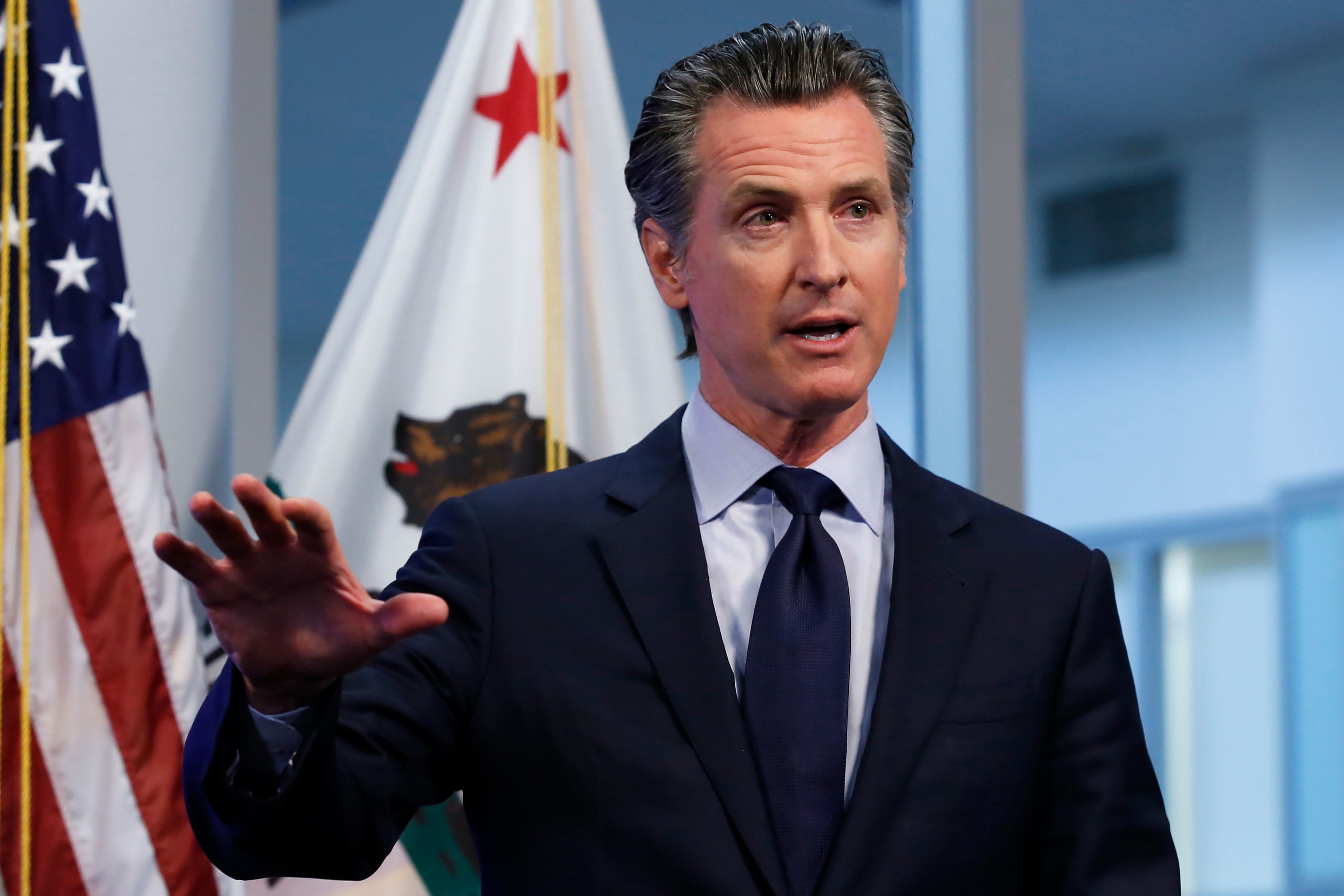Gavin Newsom, governor of California.
Rich Pedroncelli | AP | Bloomberg via Getty Images
California Gov. Gavin Newsom announced on Friday a new framework for individual counties to reopen, outlining the possibility of non-essential indoor businesses and schools to return depending on the coronavirus’ spread in the area.
The state will adopt a four-tiered approach to reopening where counties can move between the different levels depending on a county’s positivity rate, or the percentage of tests that are positive, and their case rate. Each tier — minimal, moderate, substantial and widespread — allows for more or less non-essential indoor businesses to reopen with modifications.
The governor said 38 counties, or roughly 87% of the state’s population, will begin on the “widespread” tier, which orders most non-essential indoor business operations to remain closed. Counties on the widespread tier have a positivity rate above 8% and more than seven daily new cases per 100,000 people.
The new framework moves away from what California previously called its “monitoring list,” which was a list of counties with stricter rules on its businesses depending on a number of factors, including Covid-19 hospitalizations.
Newsom said the new framework is “much more simple” as the state tries to rebound from a surge of cases over the summer after it tried reopening in May. The Golden State governor ordered all bars and all dine-in restaurants, movie theaters, museums and other indoor businesses across the state to close on July 13 as cases climbed.
According to the new framework, a county has wait 21 days before it’s allowed to move between tiers. Counties are only allowed to move one tier at a time and have to meet the qualifications for the next tier for two straight weeks.
“We’re going to be more stubborn this time and have a mandatory wait time between moves. We didn’t do that last time, and that’s a significant distinction between what we’ve learned from the past and what we’re now advancing in this more stringent — but we believe more steady — approach,” Newsom said.
The new framework also will institute an “emergency brake” if hospitalizations grow and threaten the state’s capacity to treat patients, Newsom said.
Schools will only be allowed to reopen for in-person instruction if a county is able to move out of the widespread tier, though they would still be required to wait two weeks before discussing whether to return students, California Health and Human Services Secretary Dr. Mark Ghaly said.
California’s hospitals have reported a decline in Covid-19 patients after reaching a peak of more than 7,100 people in late July, according to data presented by Newsom at a press briefing. According to the data, there were just over 4,200 people hospitalized with Covid-19 as of Thursday.
As of Friday, California has reported an average of 5,650 daily new infections based on a seven-day average, a decline of more than 27% compared with the week prior, according to a CNBC analysis of data compiled by Johns Hopkins University.
